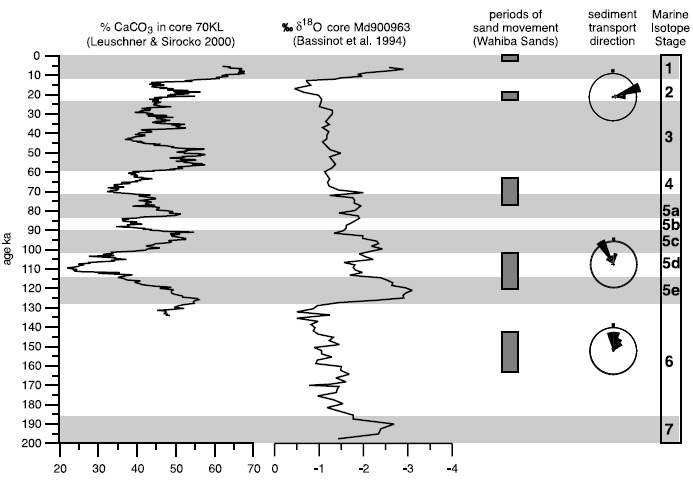A 160,000-Year record of dune development and atmospheric circulation in Southern Arabia
| The Wahiba Sands in the Sultanate of Oman are a small sand sea of about 15'000 km2. In this study, we investigate and date sediments from outcrops and two cores taken in the middle of the desert to reconstruct past phases of aeolian sand accumulation. We also measured the inclination of sedimentary beds that reveal the direction of transport and, hence, the main wind direction. By this, we aim at reconstructing the near-surface atmospheric circultion of southern Arabia. From the study of marine deposits it has been proposed that atmospheric circulation was shifted southwards during parts of the Pleistocene. | 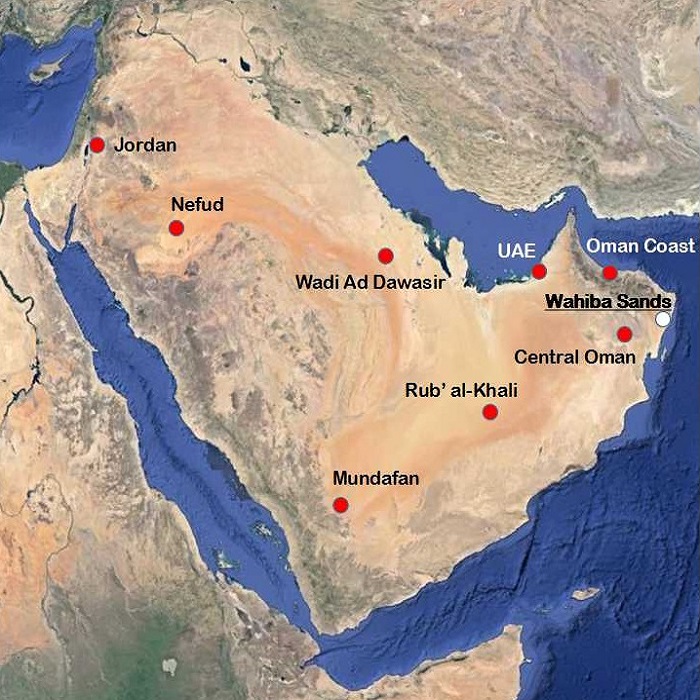 |
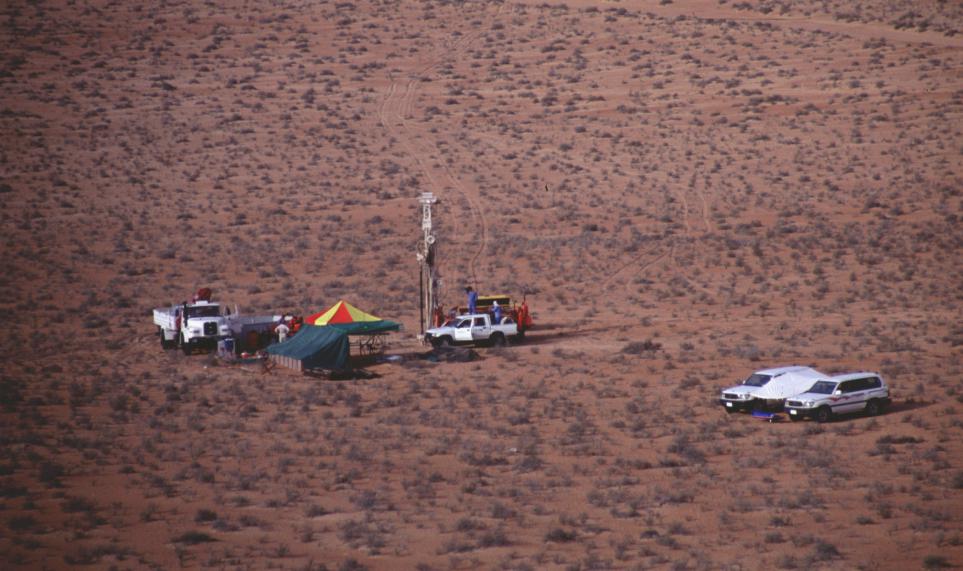 |
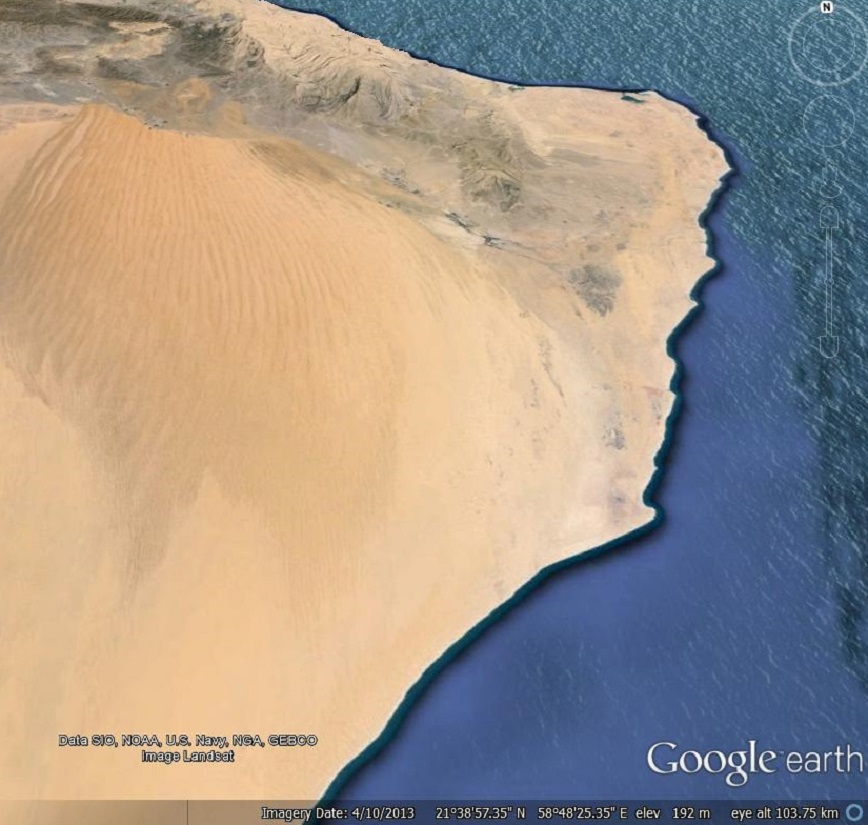 |
|
Drilling operations in the Wahibas Sands. |
The Wahiba Sands from above. |
|
Comparision of CaCO3 variability in Arabian Sea sediments (dust flux) and marine isotope stage record (global ice volume ≈ sea-level), with phases of sand accumulation observed in the Wahiba Sands.
|
Phases of sand accumulation observed in the Wahiba Sands correlated to marine isotope stages (MIS). |
|
Sand accumulation mainly took place during phases of sea-level lowering, i.e. during MIS 6, 5d, 5b and 2. The orientation of stratification within the sediments indicates a northward transport. The present atmospheric circulation pattern over Arabia sufficiently explaines the observed pattern in ancient sediments. In contrast to previous studies that assumed a southward shift of the innertropical convergence zone (ITCZ), atmospheric circulation over Arabia during glacial times was similar as today. |
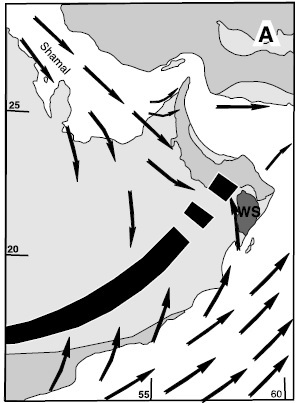 |


